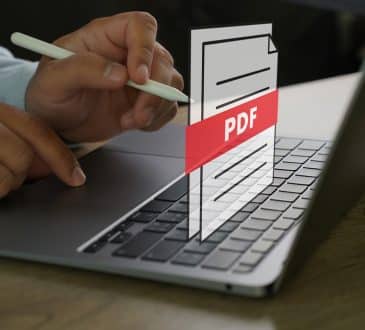Breaking Point: Investigating the Factors Leading to Car Accidents

You’re cruising down the road, wind in your hair, tunes on the radio, when suddenly, screeching brakes and crunching metal shatter the serenity. Car accidents are a jolting reality of modern life, leaving devastation in their wake. But what are the forces at play behind these collisions? Join us as we peel back the layers of this pressing issue, diving into the factors that push drivers and vehicles to their breaking point.
- Human Error: The Achilles Heel of Road Safety
Behind the wheel, we wield both power and responsibility. Yet, time and again, human error emerges as the primary catalyst for car accidents. Distraction, fatigue, ignoring LA traffic, and recklessness can turn a routine drive into a nightmare. Texting behind the wheel, nodding off at the helm, or engaging in aggressive maneuvers all invite disaster. As we explore the ins and outs of human behaviour on the road, it becomes clear that addressing these shortcomings is paramount to curbing accidents. - Speed: Accelerating Towards Disaster
In the race against time, speed often emerges as a silent adversary. Excessive velocity reduces reaction time, amplifies the impact of collisions, and transforms minor mishaps into catastrophic events. Whether due to impatience, disregard for limits, or simply the thrill of velocity, speeding remains a leading cause of accidents worldwide. Through stricter enforcement, education, and technological interventions, we can tap the brakes on this perilous trend. - Environmental Factors: Nature’s Role in Road Safety
Mother Nature is a formidable force, capable of throwing unexpected obstacles in our path. From slippery roads to blinding sunlight, environmental factors play a significant role in shaping driving conditions. Rain, snow, and fog demand heightened vigilance, while poor visibility can obscure potential hazards. We can confidently navigate these challenges by respecting the environment and adapting our driving habits accordingly. - Mechanical Failures: When Machines Misfire
Even the most meticulously maintained vehicles are not immune to malfunctions. From faulty brakes to blown tires, mechanical failures constantly threaten the road. Regular maintenance and prompt repairs are our first defence against these unpredictable setbacks. By investing in quality parts, staying attuned to warning signs, and adhering to manufacturer recommendations, we can minimize the risk of mechanical mishaps. - Urbanization: The Congestion Conundrum
The relentless march of urbanization has transformed our cities into bustling hubs of activity, characterized by dense populations, congested thoroughfares, and frenetic traffic patterns. In this chaotic milieu, the risk of accidents looms large, exacerbated by vehicles, pedestrians, and cyclists vying for limited space. Urban planners and policymakers must confront this challenge head-on, implementing measures to improve traffic flow, enhance pedestrian safety, and mitigate the risk of accidents in urban environments. - Design Flaws: The Achilles’ Heel
In addition to mechanical malfunctions, vehicle design flaws can also contribute to the occurrence and severity of accidents. Whether it’s poor visibility, inadequate crash protection, or flawed handling characteristics, these inherent deficiencies can compromise the safety of both drivers and passengers. While stringent safety standards and regulatory oversight aim to mitigate such risks, pursuing innovation must always be tempered by a commitment to prioritizing safety above all else. - Weather Woes: Nature’s Wrath
The capricious nature of weather casts a shadow of uncertainty over our roads, presenting drivers with many challenges. From blinding fog and torrential rain to treacherous ice and snow, adverse weather conditions demand heightened caution and adaptability behind the wheel. Failure to adjust speed and driving behaviour to match the prevailing conditions can spell disaster, amplifying the risk of accidents. - Road Conditions: Potholes and Pitfalls
Beyond the whims of weather, the state of road infrastructure plays a pivotal role in shaping the safety landscape. Crumbling pavements, pothole-riddled surfaces, and inadequate signage create a treacherous motorist environment. Poorly maintained roads increase the likelihood of accidents and exacerbate their severity, amplifying the impact of collisions and impeding emergency response efforts. - Infrastructure Deficiencies: Paving the Way for Safety
Behind every successful journey lies a network of roads and infrastructure. Yet, inadequacies in design, maintenance, and signage can compromise safety and exacerbate accident rates. Poorly marked intersections, insufficient lighting, and deteriorating road surfaces create hazardous conditions for drivers. By advocating for improved infrastructure investment and prioritizing safety in urban planning, we can lay the groundwork for safer travel.
Towards a Safer Tomorrow
As we conclude our investigation into the factors leading to car accidents, one truth emerges crystal clear: safety is a shared responsibility. Whether behind the wheel or shaping policy, we play a vital role in safeguarding lives on the road. By addressing human errors, curbing speeding, respecting the environment, maintaining our vehicles, and enhancing infrastructure, we can collectively chart a course toward a future where accidents are the exception, not the rule. Let’s drive change and pave the way to safer streets for all.
Have you read?
The Evolving Role of Finance: From Controllers to Co-Pilots in a Dynamic Business Landscape.
5 steps to helps leaders increase their mental health.
Inside the TikTok Revolution: An Interview with Inigo Rivero, Managing Director at House of Marketers.
Elevating Business to New Heights Through Corporate Training.
Ross Eldridge Offers Leadership Lessons from the Gym: Applying Fitness Principles to Business Success.
Add CEOWORLD magazine to your Google News feed.
Follow CEOWORLD magazine headlines on: Google News, LinkedIn, Twitter, and Facebook.
This report/news/ranking/statistics has been prepared only for general guidance on matters of interest and does not constitute professional advice. You should not act upon the information contained in this publication without obtaining specific professional advice. No representation or warranty (express or implied) is given as to the accuracy or completeness of the information contained in this publication, and, to the extent permitted by law, CEOWORLD magazine does not accept or assume any liability, responsibility or duty of care for any consequences of you or anyone else acting, or refraining to act, in reliance on the information contained in this publication or for any decision based on it.
Copyright 2024 The CEOWORLD magazine. All rights reserved. This material (and any extract from it) must not be copied, redistributed or placed on any website, without CEOWORLD magazine' prior written consent. For media queries, please contact: info@ceoworld.biz
SUBSCRIBE NEWSLETTER








